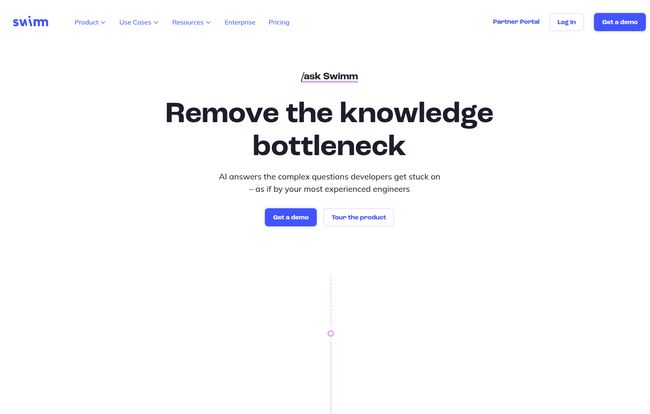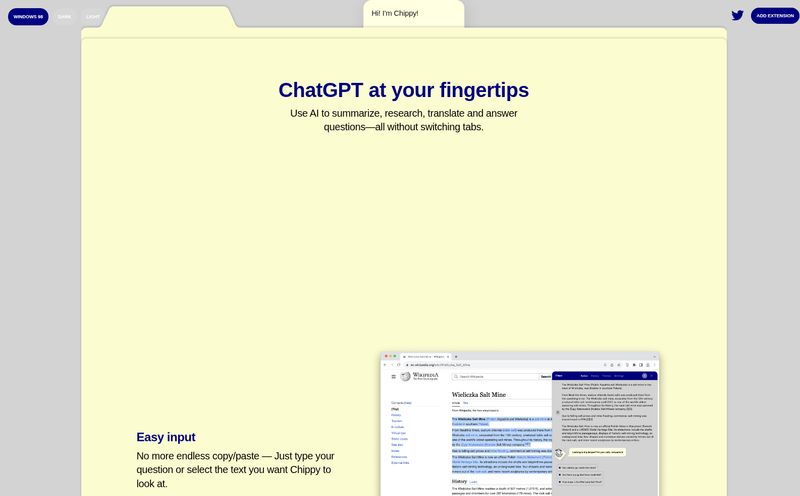We've all been there. You're dropped into a new project, handed a GitHub repo, and told to "get familiar with the codebase." It’s a feeling that mixes excitement with a slow, creeping dread. You open it up, and it’s like staring into the abyss. No comments, no README that’s been updated since the last World Cup, and the original developers are long gone, probably sipping margaritas on a beach, their legacy a tangled mess of undocumented code.
This, my friends, is the knowledge bottleneck. It’s the ghost in the machine, the dark matter of software development that slows down onboarding, frustrates even senior engineers, and makes bug-fixing feel like a dangerous game of Jenga. For years, the solution has been... well, there hasn't been a great one. Nagging people to write docs, tedious wiki pages that are outdated the second you hit publish, or just accepting that tribal knowledge is the law of the land.
But what if there was a better way? I’ve been hearing whispers in the dev community about a tool called Swimm, which claims to use AI to tackle this problem head-on. As someone who has spent years analyzing traffic, trends, and the tools that boost productivity, my curiosity was piqued. Is this just another shiny object, or could it actually be the solution we’ve been waiting for? I decided to take a look.

Visit Swimm
What on Earth is Swimm, and Why Should I Care?
At its core, Swimm isn't just another documentation platform. Think of it less like a dusty library and more like an AI-powered cartographer for your code. Its entire purpose is to help your team document, understand, and navigate your codebase without ever leaving the development workflow. The big promise here is removing that 'knowledge bottleneck' their homepage talks about—the one where all the crucial info is stuck in the head of your one most experienced engineer.
Instead of documentation being a chore you do after coding, Swimm's goal is to make it a natural, integrated part of the process. It's designed to create and maintain 'living' documentation that evolves right alongside your code. A pretty bold claim, if you ask me.
The AI Magic: A Look Under the Hood at Swimm’s Features
Alright, let's get into the nitty-gritty. What does Swimm actually do? It’s not just one thing, but a collection of smart features that work together. Here are the ones that really caught my eye.
AI-Powered Documentation on Autopilot
This is the headline feature. Swimm uses AI to help you generate documentation automatically. One of its standout tools is a simple /generate command. You can highlight a chunk of code—a complex function, a confusing class—and ask Swimm to explain it. It’s like having a senior dev on standby, ready to give you a plain-English summary of what’s going on. I can immediately see the value for new hires or for anyone trying to get up to speed on a legacy system. It's not about replacing the human touch, but about getting rid of the blank page problem.
Living Where You Work: IDE and GitHub Integration
This might be the most important part. For any tool to stick, it has to reduce friction, not add it. Swimm seems to get this. It integrates directly into your IDE (they have plugins for VS Code and JetBrains) and your GitHub workflow. This means documentation lives right next to the code it describes. You’re not context-switching between your editor, a Confluence page, and a Slack channel just to figure something out.
Even better, Swimm has a PR analysis feature. When you submit a pull request that changes code, Swimm can flag any documentation that's now outdated because of it. This is huge. It’s the missing link that has caused so many documentation efforts to fail. It turns doc maintenance from a periodic, painful cleanup into a continuous, manageable task.
Smart Visibility Rules for Your Docs
Not all documentation is created equal, and not everyone on your team needs to see everything. Swimm allows you to set visibility rules, ensuring that relevant docs appear at the right time. For example, you can have certain documentation pop up when a developer is working in a specific part of the codebase. This helps cut through the noise and delivers knowledge exactly when it's needed, which is a far cry from digging through a sprawling, unorganized wiki.
The Real-World Impact: Does Swimm Actually Move the Needle?
Features are nice, but results are what matter. So, what’s the upshot of all this tech? From my analysis, the benefits stack up pretty nicely. The biggest win is the massive reduction in manual effort. Automating the initial draft of documentation and then keeping it in sync with code changes frees up so much developer time. That time can be reinvested into, you know, actually building things.
Then there's the quality. The AI can spot things a human might miss and suggest improvements, leading to clearer, more consistent documentation across the board. The seamless integration means developers are more likely to actually use and update the docs. It’s no longer a separate, dreaded task. I've seen so many teams with great intentions fail because their documentation process was just too cumbersome. Swimm seems to lower that barrier significantly.
“SWIMM integrated into our SDLC and helps preserve vital knowledge about our codebase.”
Ultimately, this leads to faster onboarding for new team members, fewer repetitive questions flying around in Slack, and a more resilient team that isn't dependent on one or two people's memory. It’s a direct assault on technical debt.
No Tool is Perfect: The Potential Downsides
Okay, time for some real talk. As promising as Swimm sounds, it's not a magic wand. There are a few things to keep in mind. First, its reliance on AI means it's not infallible. You’ll still need a human to review the generated documentation for accuracy and nuance. The AI can tell you what the code does, but a human developer provides the why. It's a powerful assistant, not a replacement.
Second, it requires integration. This isn’t a huge hurdle, but it is a step. You need to set it up with your IDE and GitHub, which takes a bit of time and buy-in from the team. And finally, the pricing. This leads me to my next point...
Let's Talk Money: Swimm's Pricing Structure
Here’s where things get a bit mysterious. When I went to find a pricing page, I was met with a cute 404 page telling me to "Swimm to shore." The main site funnels you toward either contacting their sales team or booking a demo. This is a pretty standard B2B SaaS playbook, but it can be frustrating if you just want a quick look at the numbers.
What this usually means is that pricing is customized based on team size, feature needs, and potential enterprise-level support. Don't expect a simple, flat-rate monthly fee. While this allows for flexibility, it also means you'll have to invest time in a sales call to figure out if it fits your budget. For smaller teams or startups, this might be a bit of a barrier.
My Final Verdict: Is Swimm Worth the Hype?
After digging in, I'm genuinely optimistic about Swimm. The problem of code documentation is as old as coding itself, and most solutions have been frankly, pretty lame. Swimm's approach of integrating AI-powered, living documentation directly into the developer's workflow is, in my opinion, the right one.
Is it for everyone? Probably not. If you’re a solo dev or a tiny team working on a straightforward project, it might be overkill. But for growing engineering teams, companies with complex or legacy codebases, and anyone serious about reducing developer friction and preserving institutional knowledge, Swimm looks like a powerful ally.
It’s not going to write perfect, context-rich documentation with the push of a button. You still need your developers' brains. But it promises to handle the most tedious 80% of the work, and that alone could be a game-changer for team productivity and sanity.
Frequently Asked Questions about Swimm
What is Swimm in a nutshell?
Swimm is an AI-powered platform that helps development teams create, find, and maintain code documentation. It integrates with tools like GitHub and IDEs to make documentation a continuous part of the software development lifecycle.
How does Swimm’s AI actually work?
It uses AI to analyze code and generate explanations, summaries, and documentation drafts. For example, you can use a command like /generate to have it explain a function. It also uses AI to detect when code changes have made existing documentation obsolete.
Which IDEs does Swimm support?
Currently, Swimm offers official plugins for popular IDEs including VS Code and the JetBrains suite (like IntelliJ IDEA, PyCharm, etc.), allowing developers to access documentation right from their editor.
Is Swimm free to use?
Swimm doesn't list public pricing. You typically need to contact their sales team or book a demo to get a custom quote based on your team's size and needs. They may offer different tiers, but it's not a simple free or paid model you can sign up for directly.
How does Swimm keep documentation up-to-date?
This is one of its key features. Through its GitHub app, Swimm analyzes pull requests. If a code change affects a piece of documented logic, Swimm will automatically flag teh associated documentation as potentially outdated, prompting the developer to update it before merging.
Does Swimm replace the need for developers to write docs?
No, it acts as a powerful assistant. It automates the tedious parts and provides excellent drafts, but human developers are still needed to provide context, business logic, and the crucial 'why' behind the code. It’s about collaboration, not replacement.
References and Sources
For this review, I pulled information directly from Swimm's official website and resources:



